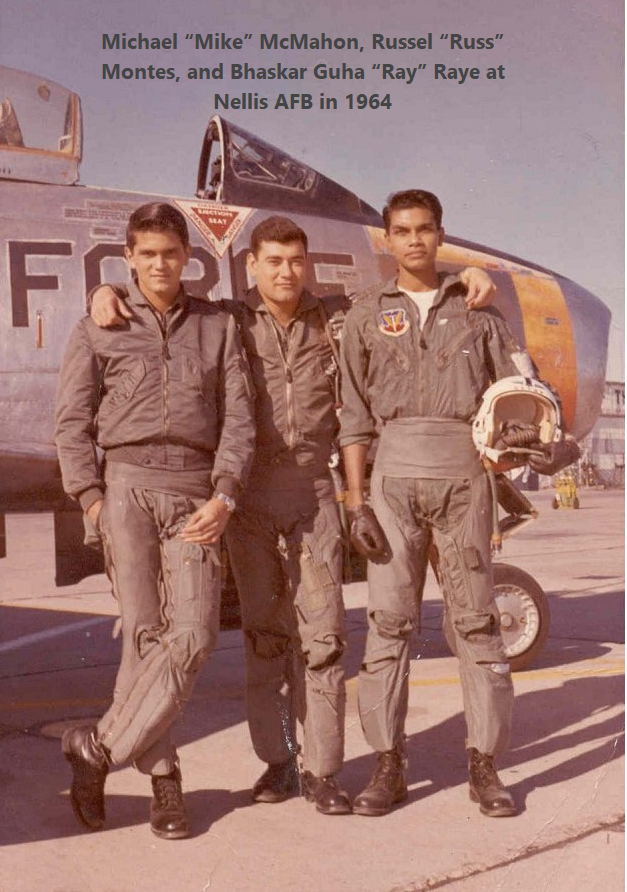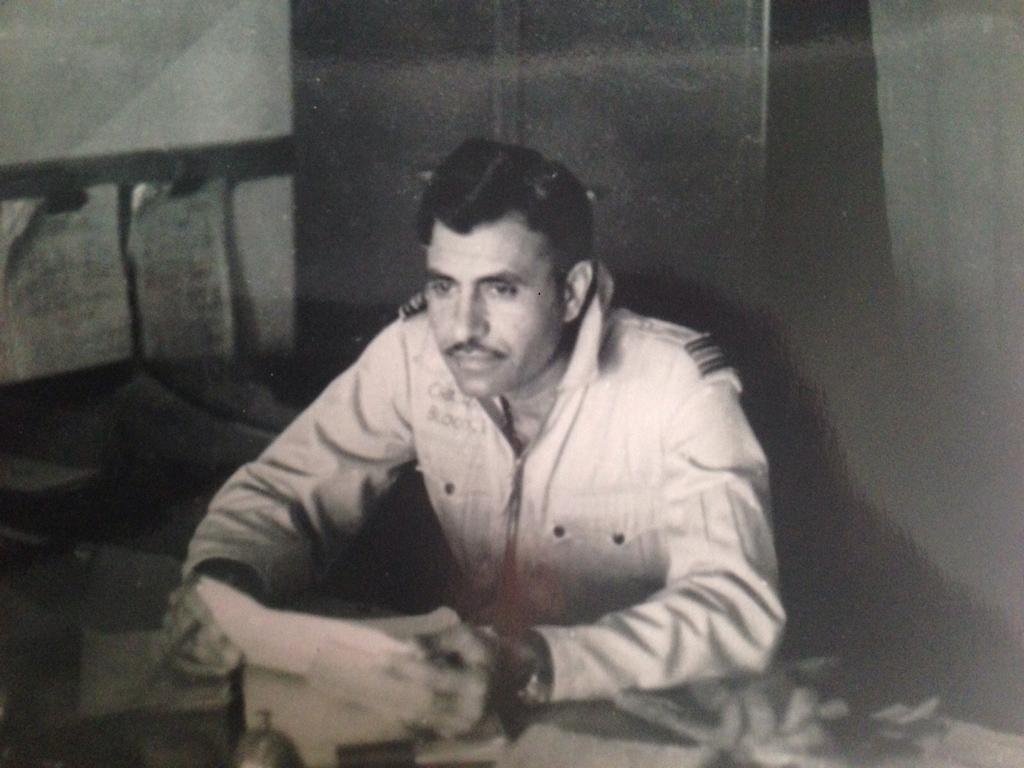
Celebrating today, 50 threads on @IAF_MCC History. Barring a few earlier, it all began in Jan’22. Since then: ~1000 tweets, 5.2 million views, ~70,000 engagements. This thread is a compendium of all the threads so far. Humbled & grateful for the encouragement. #IAFHistory (1/51) 

The heroic story of Leh Airfield construction (1/50)
https://twitter.com/AnchitGupta9/status/1279840733038407680
Beautifully Camouflaged Vampire and its heroics in 1971 War (2/50)
https://twitter.com/AnchitGupta9/status/1367402475800592391
Wing Cdr Marshall, CO of the Vampire Ad-hoc Sqn – first-hand narration. (3/50)
https://twitter.com/AnchitGupta9/status/1367467363537354753
How did an @IAF_MCC base at Hindon (near Delhi) come about (4/50)
https://twitter.com/AnchitGupta9/status/1455034807914680332
“Mad Mally” – Maverick, war decorated and later dismissed fighter pilot (5/50)
https://twitter.com/AnchitGupta9/status/1455088455432609797
Helicopter Dare devils in the Galwan Ops of 1962 (6/50)
https://twitter.com/AnchitGupta9/status/1457368889608708106
AVM Kishnaswamy – The longest-serving Staff Officer to Chief of Air Staff (7/50)
https://twitter.com/AnchitGupta9/status/1470746919580229632
Did you know @IAF_MCC had its own “LEGAL” branch for a brief period? (8/50)
https://twitter.com/AnchitGupta9/status/1484770588568989696
AS Kuller – Maverick, brilliant, decorated and nerdy fighter pilot (9/50)
https://twitter.com/AnchitGupta9/status/1485226052226289674
Haider Raza, the forgotten Airman (10/50)
https://twitter.com/AnchitGupta9/status/1486171347906875395
1947 War – The Dakota’s gallantry role (11/50)
https://twitter.com/AnchitGupta9/status/1486622251763965953
Republic Day Flypast – Midair Collision (12/50)
https://twitter.com/AnchitGupta9/status/1486949420453498880
@IAF_MCC link to nabbing the assassins of MK Gandhi (13/50)
https://twitter.com/AnchitGupta9/status/1487622554181197831
Life of CRA Howe, IAF Fighter Pilot who flew for RAAF and earned a DFC (14/50)
https://twitter.com/AnchitGupta9/status/1487998676173668359
IAF’s connection to the Jind dynasty (15/50)
https://twitter.com/AnchitGupta9/status/1488365368020123649
Jagdev Chandra – The first-ever Indian flying instructor in the IAF (16/50)
https://twitter.com/AnchitGupta9/status/1488740896879222784
Ambala – The oldest station in the IAF (17/50)
https://twitter.com/AnchitGupta9/status/1489090823656378373
IAF’s umbilical connection to Walton, Lahore (18/50)
https://twitter.com/AnchitGupta9/status/1489529906539024384
Members of the royal families who served in the IAF (19/50)
https://twitter.com/AnchitGupta9/status/1489839195094863877
History of aerobatics in the IAF (20/50)
https://twitter.com/AnchitGupta9/status/1490551589781708801
The first navigators to be trained in India and 12 Sqn’s role in it (21/50)
https://twitter.com/AnchitGupta9/status/1490949520896626689
Air Cmde AIK Suares – the first of the only 5 to receive “Bar to Vir Chakra” (22/50)
https://twitter.com/AnchitGupta9/status/1491274558783246338
War history of Ad-hoc Squadrons in the IAF (23/50)
https://twitter.com/AnchitGupta9/status/1492080910136664065
IAF’s first Helicopter – the S-55 (24/50)
https://twitter.com/AnchitGupta9/status/1493051074936115202
IAF & its connection with Daulat Beg Oldi (DBO) (25/50)
https://twitter.com/AnchitGupta9/status/1494158617221550081
@IAF_MCC ’s fighter operations at Leh airbase (26/50)
https://twitter.com/AnchitGupta9/status/1495014840242302980
Tribute to Air Mshl Subramaniam Raghavendran (27/50)
https://twitter.com/AnchitGupta9/status/1495592162977009665
Air Mshl Douglas King-Lee, the oldest surviving Air Marshal in the IAF (28/50)
https://twitter.com/AnchitGupta9/status/1496109877370003459
The IAF Dakota that was shot down by the Naga’s (29/50)
https://twitter.com/AnchitGupta9/status/1496794596482772999
India’s reserve Air Force (Auxiliary AF) (30/50)
https://twitter.com/AnchitGupta9/status/1497872174245285889
Air Mshl Minoo Engineer – IAF’s most decorated officer (31/50)
https://twitter.com/AnchitGupta9/status/1500110788316459010
IAF’s service numbers – the oddity and Check suffix (32/50)
https://twitter.com/AnchitGupta9/status/1500855452279603202
MiG-21 – type wise history of service in IAF (33/50)
https://twitter.com/AnchitGupta9/status/1501237283214688260
Tribute to Air Mshl TS “Timki” Brar (34/50)
https://twitter.com/AnchitGupta9/status/1505146467630997506
The only 38 A-1 Qualified flying instructors in IAF (35/50)
https://twitter.com/anchitgupta9/status/1507615687098855426
India’s Air Defence setup in the 1940s/50s (36/50)
https://twitter.com/anchitgupta9/status/1511888287048249344
Air Defence Setup evolution in the 60s (37/50)
https://twitter.com/anchitgupta9/status/1514504493034926081
Air Defence cranking up during the 65 and 71 wars (38/50)
https://twitter.com/anchitgupta9/status/1515561627671678979
Only 26 officers have got a Vayu Sena Medal & Bar (39/50)
https://twitter.com/anchitgupta9/status/1527193495990988800
The first known patch of Fighter Training Setup (40/50)
https://twitter.com/AnchitGupta9/status/1530018122723299328
The only five officers qualified as a Flying Instructor, Experimental Test Pilot, and Pilot Attack Instructor. (41/50)
https://twitter.com/anchitgupta9/status/1530545024407986176
TACDE - the story of how independent India made its own Mavericks (42/50)
https://twitter.com/anchitgupta9/status/1531209587608543233
AVM Jemi Manekshaw, younger brother of Sam Manekshaw (43/50)
https://twitter.com/AnchitGupta9/status/1532381433922080768
IAF Structure and Nomenclature – de-jargonised. (44/50)
https://twitter.com/AnchitGupta9/status/1534572915038953472
Air Cmde NP Nair – Forgotten Techie officer (45/50)
https://twitter.com/anchitgupta9/status/1535142169391951872
Sealand Scandal – Parliament Q&A (46/50)
https://twitter.com/anchitgupta9/status/1535929532141621248
IAF pilots training at US Air Force in the 1960s (50/50)
https://twitter.com/anchitgupta9/status/1540002419437752320
• • •
Missing some Tweet in this thread? You can try to
force a refresh


















